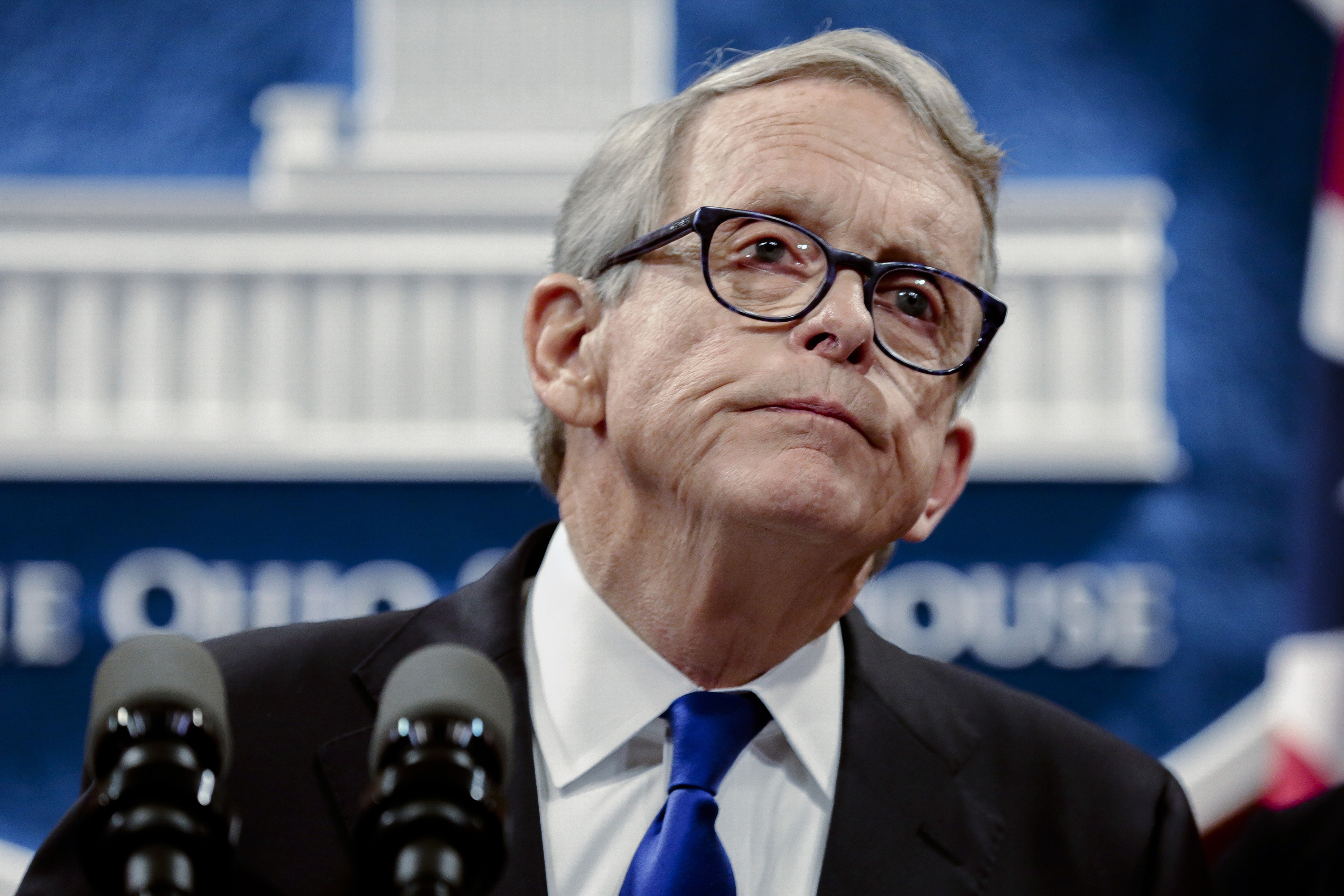
COLUMBUS, Ohio (AP) — Ohio Gov. Mike DeWine unveiled a two-year, $75 billion state budget on Monday that includes a $1 billion initiative to help bring the state back from the economic downfall of the pandemic.
The budget proposal was crafted “with the goal of emerging even stronger from the COVID-19 pandemic,” DeWine said as he announced the plan with Lt. Gov. Jon Husted.
The $1 billion comes from a combination of savings through a reduced workforce and frozen state spending, along with an increase in federal Medicaid dollars. It’s meant as a one-time investment only, the governor said.
Some details of the budget:
PANDEMIC RELIEF:
—More than $450 million in relief for small businesses struggling since the pandemic began. The types of businesses include movie theaters, concert venues as well as bars and restaurants. The funding will allocate $20 million to new businesses started in 2020 as well as enhanced services to minority-owned businesses.
—In an effort to “strengthen Ohio communities, $450 million will be invested in key infrastructure projects, with $250 million of that going toward expanding broadband access to rural parts of the state.
—The state will use $50 million to promote Ohio to a “national audience,” in a PR campaign meant to bring new residents to the state as well as convince former residents to return.
—To advance Ohio’s workforce, an investment of $70 million will be made to both ensure businesses have access to top-quality candidates and candidates receive the training, tech-focused credential needed to move up in their careers.
EDUCATION:
—More than $13 billion in total will be allocated each year to schools and districts across Ohio, including $1.1 billion to support Student Wellness and Success Funds, a program launched by DeWine during the last budget that fosters continued partnerships between schools and districts and local organizations providing social services to students.
—Close to $1.6 billion of the education budget will go to support child nutrition programs, which provide school breakfast and lunch meals as well as summer food service to millions of students.
—In response to the COVID-19 pandemic’s impact on schools, more than $2.4 billion in federal emergency relief funding will go to extend learning programs.
HIGHER ED:
—In an effort to make college more affordable for students with financial needs, the budget will set aside $211 million in order to raise the per-student Ohio College Opportunity Grant award by $500.
—The state will provide $53 million in scholarships to at least 2,000 students to continue efforts to strengthen Ohio’s competitiveness within the fields of science, technology, engineering, math and medicine.
PRISONS:
—The budget will allocate funding to provide incarcerated Ohioans struggling with substance abuse or mental health problems with access to resources for recovery. The investment plans to expand access to counseling, peer support, technology and medication within the state’s correctional facilities.
H2OHIO
—The H2Ohio water quality initiative, introduced in 2019, will receive nearly $250 million to continue the state’s effort to clean up toxic algae in Lake Erie and protect other lakes and rivers throughout Ohio.
The funding will include $100 million to enroll and engage 1,900 agriculture producers to help farmers implement practices to prevent nutrient runoff, the biggest contributor to the algae in western Lake Erie.
OHIO STATE HIGHWAY PATROL
—While DeWine said the budget would not include any tax increases, he did introduce an increase in the state’s motor vehicle fees to help fund the Ohio State Highway Patrol. The governor proposed a $10 increase in motor vehicle registration fees and a $2 increase to the title fee.
The law enforcement agency has been heavily involved in the state’s response to the Black Lives Matter protests last summer as well as patrolling the Ohio Statehouse after a number of violent protests over COVID-19 restrictions and the 2020 presidential election.
___
Farnoush Amiri is a corps member for the Associated Press/Report for America Statehouse News Initiative. Report for America is a nonprofit national service program that places journalists in local newsrooms to report on undercovered issues.
Read more on H2Ohio on Great Lakes Now:
H2Ohio: Ohio governor’s plan puts $1 billion toward clean water and new wetlands
Field Tiles: Continued use and improvement of drainage systems pose problems for Lake Erie
Total Maximum Daily Load: Court case looks to push for Ohio EPA nutrients limit for Lake Erie
Funding Boost: EPA gives Great Lakes extra $20 million but state funding at risk
Wetland Wisdom: Documentary looks at breakthrough in Great Lakes wetland research
Featured image: In this file photo from Aug. 6, 2019, Ohio Gov. Mike DeWine pauses while speaking at the Ohio Statehouse in Columbus, Ohio. (Joshua A. Bickel/The Columbus Dispatch via AP, File)




